With options for getting rid of its convicts drying up, Britain started thinking about reforming both its prisons and the prisoners inside them. The intention behind these prison reforms was great. But attempts to create a better prison system involved wild philosophy experiments in real life, a lot of Bibles, a lot of time to think in silence, and… treadmills?
Featured image: A prisoner engaged in “hard labor,” turning a crank that rotated paddles inside a box of sand. (Image source)

A derelict beached ship used a convict hulk in the early 1800s. (Image source)
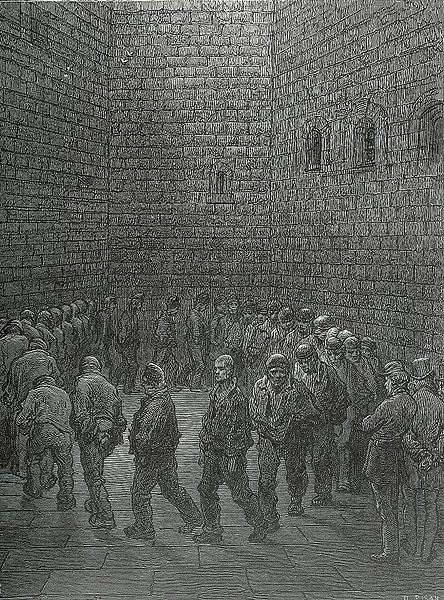
Cramped conditions in the Newgate Prison yard in the 1870s. We should note that although there were newer “model” prisons in London, Newgate did continue to operate. (Image source)
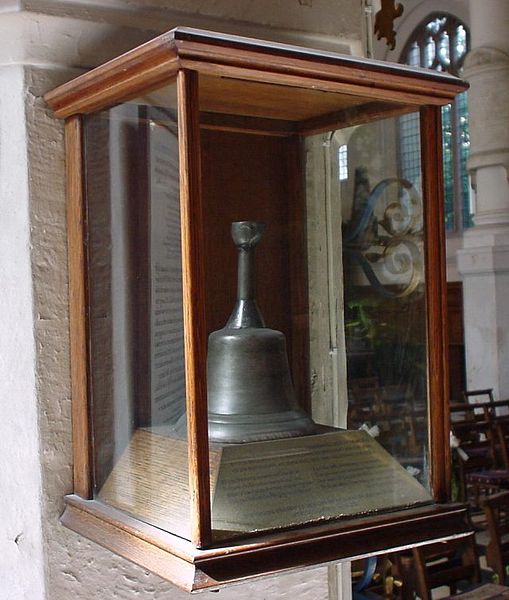
The Newgate execution bell, which was tolled with the chant: All you that in the condemned hole do lie, Prepare you, for tomorrow you shall die; Watch all and pray, the hour is drawing near, That you before the Almighty must appear; Examine well yourselves, in time repent, That you may not to eternal flames be sent: And when St. Sepulchre’s bell tomorrow tolls, The Lord above have mercy on your souls. (Image source)
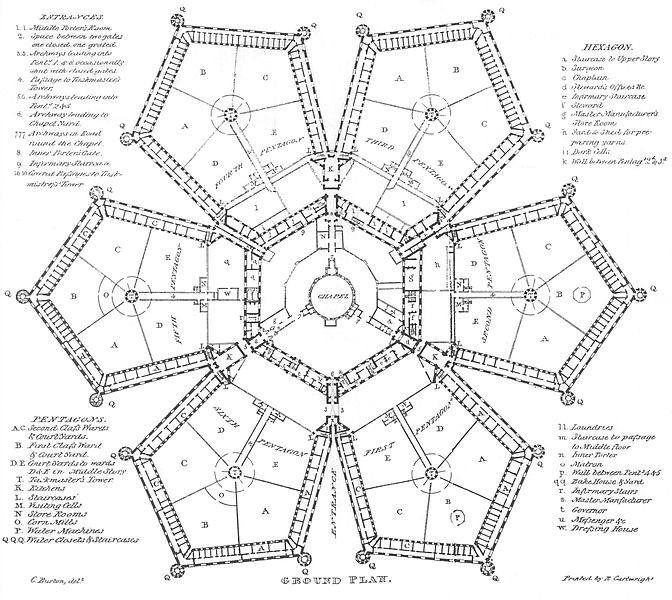
A plan of Milbank Prison, with central towers that allow guards to watch prisoners at all times. The actual Milbank Prison was such a mess by the time construction finished that people often got lost in its mazelike architecture. (Image source)
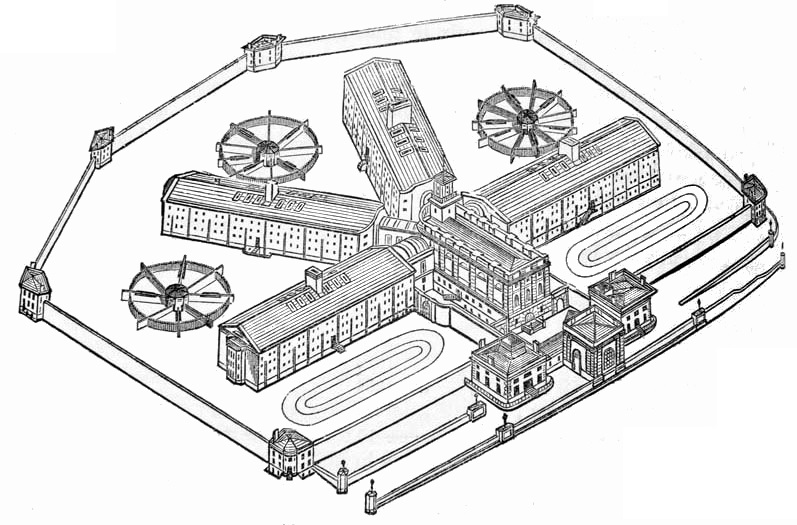
Pentonville prison, which kept the idea of wings radiating from a central area but was not a true panopticon in the model Bentham intended. (Image source)
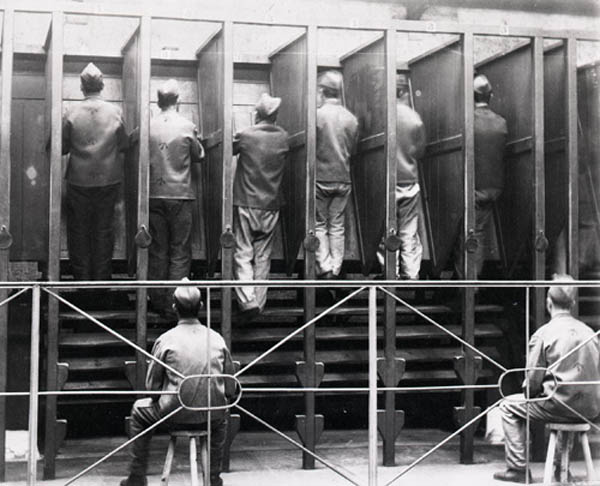
The prison treadmill at Pentonville. This picture was taken in the 1930s, so this practice continued long past the point there was even any pretense that turning a machine like this with human power might be productive work. (Image source)
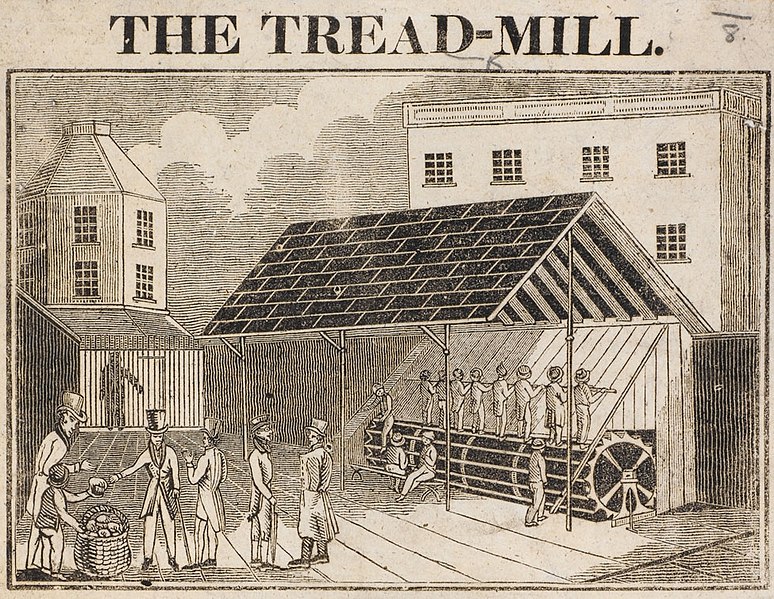
Another prison treadmill at Brixton Prison. (Image source)
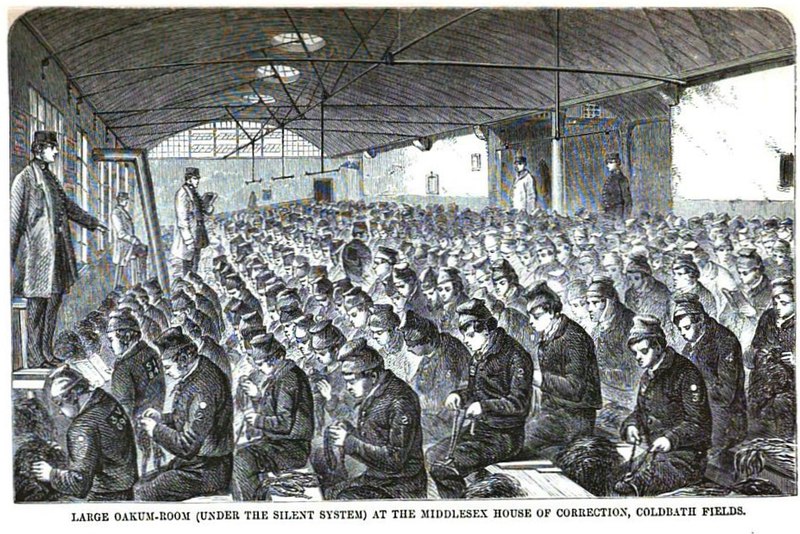
Prisoners picking oakum at Coldbath Fields. (Image source)
Sources
- Convict transportation ends
The Bloody Code
Criminalisation and the eighteenth-century’s ‘Bloody Code’
A Victorian prison - Authority and the Prison of the Mind: Bentham and Foucault’s Panopticon
Convict Labor during the Colonial Period
Population of England over history
Newgate Prison Wall
What Type of Criminal Are You? 19th-Century Doctors Claimed to Know by Your Face
Millbank Prison
Jeremy Bentham, Elizabeth Fry, and English Prison Reform
The English Quakers and Prison Reform 1809-23
Discipline, Government and Law: Separate Confinement in the Prisons of England and Wales, 1830-1877
Monitoring isolation and solitary confinement in the UK: inadequate procedures and informal practices need to be addressed
Solitary Confinement in Prison Systems and Future Psychopathological Effects
Ideas and Their Execution: English Prison Reform
The Making of the Penitentiary Act, 1775-1779
Prisoners, Poverty and Picking Oakum
A Victorian prison
Prison Treadmills - Timeline: A history of probation
